Loading…
Some lost their homes. Some emptied their retirement accounts. Some struggled to feed and clothe their families. Medical debt now touches more than 100 million people in America, as the U.S. health care system pushes patients into debt on a mass scale. Debtors are from all walks of life and all corners of the country. Here are their stories ― how they got into debt, what they’ve given up for it, and how they’re living with the burden.
100 Million People in America Are Saddled With Health Care Debt
The U.S. health system now produces debt on a mass scale, a new investigation shows. Patients face gut-wrenching sacrifices.
Read More
An Air Force career held up because of debt owed for medical bills
By Aneri Pattani, KHN
Samaria Bradford, 27, Goldsboro, North Carolina
Approximate Medical Debt: $5,000
Medical Issue: Emergency room care
What Happened: In late August 2022, Samaria Bradford was prepared to leave for basic training any day. She’d been in contact with an Air Force recruiter. Her qualifying test score from two years earlier was still valid, and she’d lost weight to meet the physical requirements. She felt so good about it that she gave two weeks’ notice at her nursing home job.
Then the recruiter sent a text: “We got your credit check back you have multiple accounts in collects.”
Bradford had unpaid bills — mostly from hospitals and ambulance companies — that had gone to collections. The recruiter said she needed to set up payment plans to address the debts before she could enlist.
“I was very upset and surprised,” Bradford said. “I didn’t know your medical debt could stop you from joining.”
Bradford had dreamed of enlisting in the Air Force for years. She took the qualifying exam in 2020 but delayed her enlistment so she could stay close to home and support her younger sister, who was in high school at the time.
She worked a variety of jobs to stay afloat — as a cashier, then as a cook and a staff member at a bowling alley for a bit. Later, she took overnight shifts at a hospital. The pay covered rent, utilities, and food, but she had little left over.
Most of the jobs didn’t offer benefits, and since North Carolina had not expanded Medicaid, Bradford did not qualify for the public insurance.
Over the years, when she landed in the emergency room without insurance, bills racked up quickly. One time, she had a rash along her back that she feared was an allergic reaction. Another time, she was dehydrated and had to be brought to the hospital by ambulance. A car wreck led to another visit.
By 2022, when the Air Force recruiter looked into her finances, Bradford owed roughly $5,000 spread across a half-dozen bills. In response to his text about the debts, she wrote, “I’m guessing is doctor bills?”
What’s Broken: Several branches of the military check financial histories when evaluating recruits. “Credit checks aid in determining recruit financial responsibility while aiming to safeguard national security,” said Christine Cuttita, an Air Force Recruiting Service spokesperson. Depending on the particulars of the case, she confirmed, an individual can be disqualified from enlisting because of debt.
Red flags on a credit report include late payments, long-term debts, or total debt — including student loans, mortgages, and medical debt — that exceeds 40% of the person’s income. There’s no strict disqualifier; rather, a squadron commander evaluates each case and assesses it in the “best interest of the Air Force,” Cuttita said.
Employers in other sectors also commonly use credit checks to evaluate candidates.
However, research from the federal Consumer Financial Protection Bureau suggests medical debts should be treated differently than other debts.
The CFPB found that unlike credit card debt, medical bills that have gone to collections aren’t an accurate predictor of someone’s likelihood to pay bills. In fact, the agency determined that people with “paid medical collections were less likely to be delinquent than other consumers with the same credit score.”
The Biden administration this year advised federal lenders to no longer consider medical debt when evaluating loan applications. VantageScore, one of the companies that calculate consumers’ credit scores, has said it will stop using medical collections in its formula.
But running credit checks on job candidates remains common. For those with medical debt, that can mean being turned away from jobs because of the bills they are trying to pay off.
What’s Left: After receiving the recruiter’s text, Bradford set out to make payments on as many medical bills as she could. Using savings from the nursing home job she had recently left, she closed out two accounts on which she owed a few hundred dollars and made smaller payments toward bills of $1,000 or more.
But, it turned out, those were not the debts showing up on the Air Force credit check.
“Of the five payments I made, only one of them was connected to what my recruiter saw on his end,” Bradford said.
Medical debts can be difficult to track, especially once hospitals and doctors’ offices sell them to collection agencies. A given bill may be reported to one credit agency but not another, meaning any single report cannot give a full picture of someone’s debt.
Adding to the confusion, the credit check that Bradford’s recruiter shared with her showed the amount of each debt but not to whom it was owed.
Bradford is now getting help to track down each debt from a friend who used to work in hospital billing. She has also taken a new job to ensure she can pay down those bills.
With the time that has passed, her previous score for the Air Force’s qualifying test is no longer valid. She’s planning to retake the exam and try to enlist next year.
“I’m trying to solve the problem now to go ahead,” Bradford said. But she still questions why the Air Force would delay anyone’s enlistment for this kind of debt.
“If you need people to be there for the country and to fight for the country,” she said, “why would you hold them up for a medical bill?”
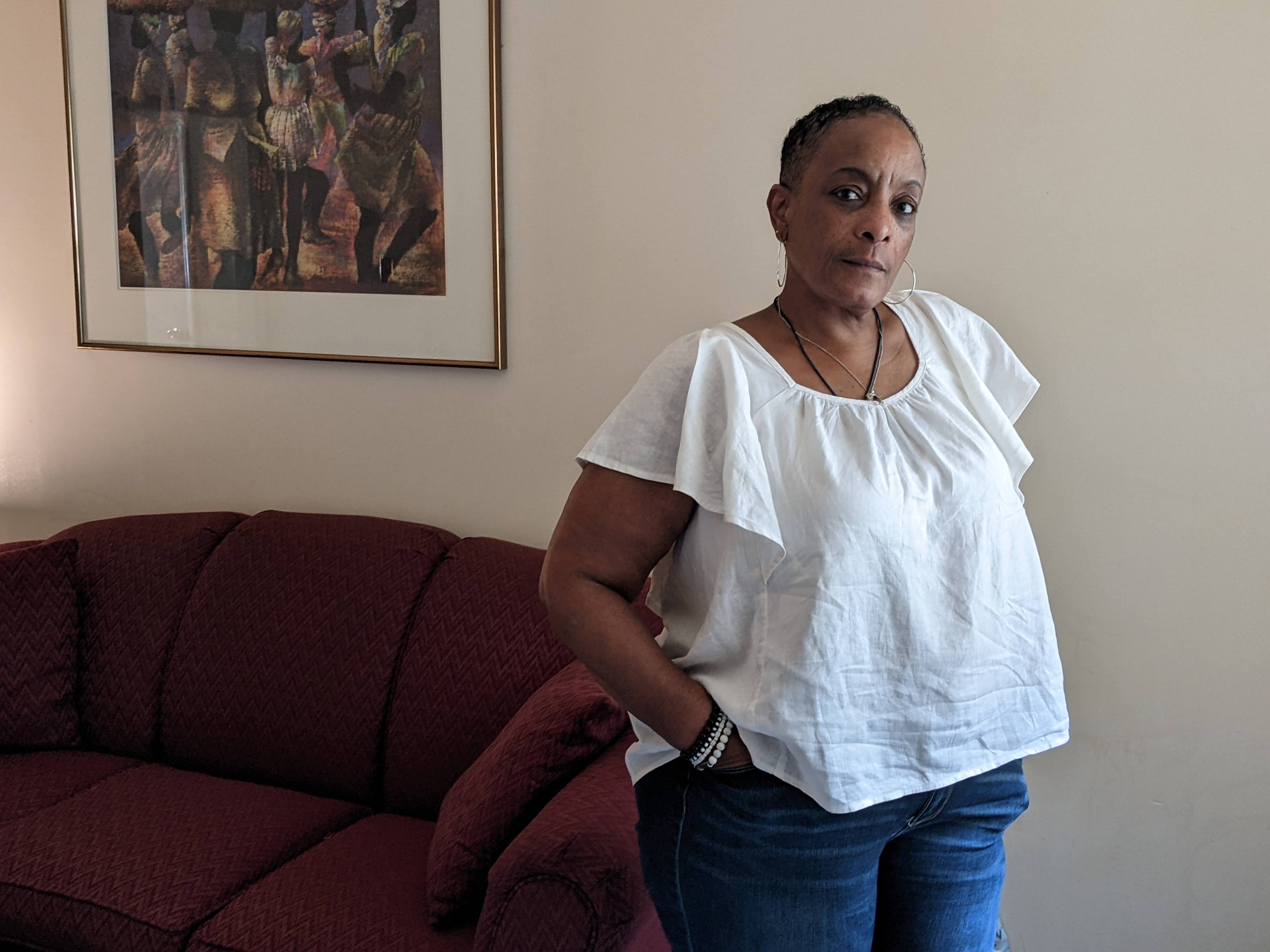
Her credit was ruined by medical debt. She’s been turned away from doctors, jobs, and loans
By Aneri Pattani, KHN
Penelope Wingard, 58, Charlotte, North Carolina
Approximate Medical Debt: More than $50,000
Medical Issue: Breast cancer
What Happened: After a year of chemo and radiation, in 2014, Penelope Wingard finally heard the news she’d been praying for: Her breast cancer was in remission. But with relief immediately came worry about her finances.
Wingard had received Medicaid coverage through a temporary program for breast cancer patients. When her treatment ended, she became uninsured.
Bills for follow-up appointments, blood tests, and scans quickly piled up. Soon, her oncologist said he wouldn’t see her until she paid down the debt.
“My hair hadn’t even grown back from chemo,” Wingard said, “and I couldn’t see my oncologist.”
It took about six months to find a doctor who would see her while unpaid bills accrued.
Wingard was later diagnosed with an aneurysm that required brain surgery and, separately, vision problems that prompted corneal transplants in both eyes. Within a few years, she was buried under tens of thousands of dollars in medical debt.
She learned to recognize the phone numbers of bill collectors and ignore the past-due notices arriving in the mail. She wanted to pay them but had to prioritize rent, utilities, and food. After taking care of those expenses, she had little money left from her jobs as a covid-19 contact tracer and a driver for ride-hailing services.
The unpaid medical bills began hitting her credit. Soon, she struggled to qualify for loans. Applying for apartments and jobs became a nightmare.
“It’s like you’re being punished for being sick,” Wingard said.
What’s Broken: Unpaid medical bills can be reported to credit agencies and show up as black marks on a person’s financial record, making it harder to qualify for a car loan, rent an apartment, or get a job.
Earlier this year, three national credit agencies announced new policies that would remove from credit reports paid medical debts and those that are less than $500 even if they are unpaid.
The changes, slated to go into full effect in 2023, are expected to benefit an estimated 16 million Americans.
But millions of Americans who owe far more than $500 may not benefit — 1 in 4 U.S. adults with health care debt owe more than $5,000, according to a KFF poll conducted for this project; 1 in 8 owe more than $10,000.
A recent report by the Consumer Financial Protection Bureau also suggests that the changes to credit reports may disproportionately benefit wealthier Americans living in predominantly white neighborhoods. They’re more likely to have health insurance, experts say, and collections under $500 often come from an unpaid copay or coinsurance.
In contrast, people with the highest levels of medical debt tend to be Black or Hispanic, have low incomes, and live in the South. According to the KFF poll, 56% of Black adults and 50% of Hispanic adults said they have debt because of medical or dental bills, compared with 37% of white adults. And a study published in 2021 found that medical debt was highest within low-income communities and in Southern states that had not expanded Medicaid.
As an uninsured Black woman living in North Carolina, Wingard sits squarely among the communities hit hardest by medical debt. Yet she will not benefit from the credit agencies’ new policies.
What’s Left: Wingard has resigned herself to living with medical debt. That means worrying that another doctor will turn her away because of unpaid bills and having employers reject her from jobs because poor credit shows up as a red flag on background checks.
Her fridge and stove have both been broken for over a year. She can’t qualify for a loan to replace them, so instead of making baked chicken from her favorite family recipe, she often settles for a can of soup or fast-food chicken wings.
But there are signs that help is on the way. The Biden administration has asked the Consumer Financial Protection Bureau to investigate whether medical debt should ever appear on credit reports, and some states — including North Carolina — are considering strengthening protections against medical debt.
Wingard is hopeful she’ll get relief soon. “I’m hoping someone will listen and say we need to focus more on health care for all Americans,” she said. “I don’t know if they will, but it’s just a blind hope.”
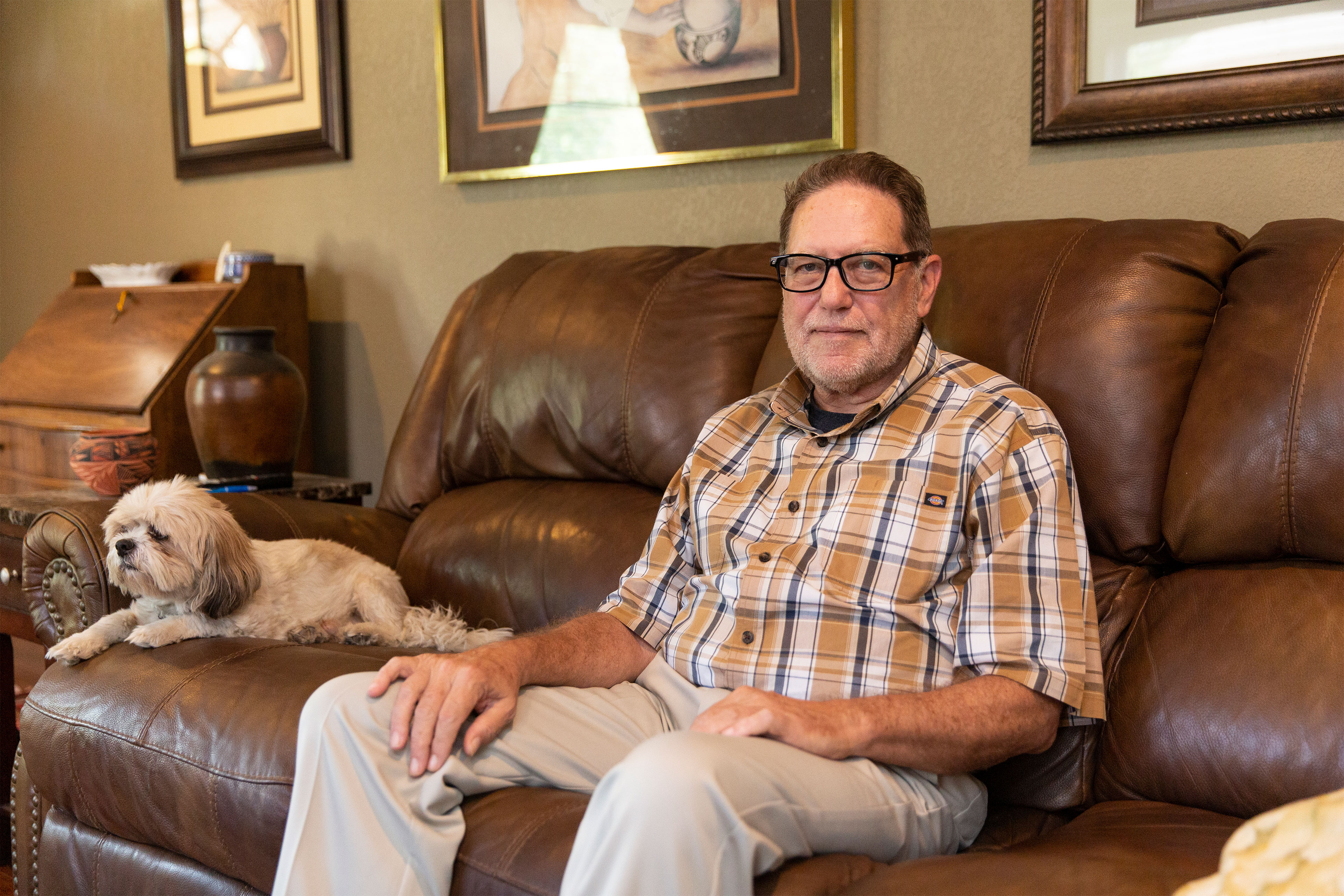
A retiree returns to work after a calamitous year of health emergencies
By Noam N. Levey, KHN
David Zipprich, 65, Fort Worth, Texas
Approximate Medical Debt: More than $200,000
Medical Issue: Diabetes and covid-19
What Happened: David Zipprich, a Fort Worth businessman and grandfather, was forced out of retirement after a series of hospitalizations left him owing more than $200,000.
Zipprich had spent a career in financial consulting. He owned a small bungalow in a historical neighborhood near the Fort Worth rail yards. His daughters, both teachers, and his four grandchildren lived nearby. He had health insurance and some savings, and he’d paid off his mortgage.
In early 2020, though, Zipprich landed in the hospital. While he was driving, his blood sugar dropped precipitously, and he blacked out and crashed his car.
Three months later, after he was diagnosed with diabetes, another complication sent him back to the hospital. In December 2020, covid-19 put him there again. “I look back at that year and feel lucky I even survived,” Zipprich said.
What’s Broken: Of the nation’s 20 most populous counties, none has a higher prevalence of medical debt than Tarrant County, where Fort Worth is located. Second is adjacent Dallas County, credit bureau data shows.
Nevertheless, Dallas-Fort Worth medical systems have been thriving. Though many are exempt from taxes as nonprofit institutions, several notched double-digit profit margins in recent years, outperforming many of the area’s Fortune 500 companies.
A KHN review of hospital finances in the country’s 306 hospital markets found that several of the most profitable markets also have some of the highest levels of patient debt.
Overall, about a third of the 100 million adults in the U.S. with health care debt owe money for a hospitalization, according to a poll conducted by KFF for this project. About a quarter of those owe $10,000 or more.
“The fact is, if you walk into a hospital today, chances are you are going to walk out with debt, even if you have insurance,” said Allison Sesso, chief executive of RIP Medical Debt, a nonprofit that buys debt from hospitals and debt collectors so patients won’t have to pay it.
Overall in Tarrant County, 27% of residents with credit reports have medical debt on their records, credit bureau data analyzed by KHN and the nonprofit Urban Institute shows. In Dallas County, it’s 22.5%
What’s Left: Even with insurance, Zipprich was inundated with medical bills, debt notices, and calls from collectors.
As he struggled to pay, his credit score plummeted below 600, and he had to refinance his home. “My stress was off the charts,” he said, sitting in his tidy living room with his Shih Tzu, Murphy.
Last year, Zipprich returned to work, taking a job in New Jersey that required him to commute back and forth to Texas. He recently quit, citing the strain of so much travel. He’s job-hunting again. “I never thought this would happen to me,” he said.

From her view in Knoxville, the health system is ‘not designed for poor people’
By Noam N. Levey, KHN
Monica Reed, 60, Knoxville, Tenn.
Approximate Medical Debt: $10,000
Medical Issue: Cancer
What Happened: Monica Reed considers herself luckier than most. Born in Knoxville and raised by a single mother, Reed became the first in her family to own a home, a small house built after the city demolished The Bottom, a once thriving Black neighborhood that was systematically wiped out in a midcentury urban renewal campaign. For the past 15 years, Reed has worked for a faith-based nonprofit that assists low-income residents of Knoxville.
“It hasn’t always been easy,” Reed said. She raised her son by herself. And though she’s always worked, her modest salary made saving difficult. “I just tried to live a frugal kind of life,” she said. “And by the grace of God, I didn’t become homeless.”
She couldn’t escape medical debt, though. Diagnosed with cancer five years ago, Reed underwent surgery and chemotherapy. Although she had health insurance through work, she was left with close to $10,000 in medical bills she couldn’t pay.
What’s Broken: In and around Knoxville, residents of predominantly Black neighborhoods are more than twice as likely as those in largely white neighborhoods to owe money for medical bills, Urban Institute credit bureau data shows. That is one of the widest racial disparities in the country.
Health care debt in the U.S. now affects more than 100 million people, according to a nationwide KFF poll conducted for this project. The toll has been especially high on Black communities: Fifty-six percent of Black adults owe money for a medical or dental bill, compared with 37% of white adults.
The explanation for that startling disparity is deeply rooted. Decades of discrimination in housing, employment, and health care blocked generations of Black families from building wealth — savings and assets that are increasingly critical to accessing America’s high-priced medical system.
Against that backdrop, patients suffer. People with debt avoid seeking care and become sicker with treatable chronic conditions like diabetes or multiple sclerosis. Worse still, hospitals and doctors sometimes won’t see patients with medical debt — even those in the middle of treatment.
Nationwide, Black adults who have had health care debt are twice as likely as white adults with such debt to say they’ve been denied care because they owe money, the KFF poll found. Many Black Americans also ration their care out of fear of cost.
If Black patients go into debt, they face yet another challenge: a medical debt collection industry that targets Black debtors more aggressively than their white counterparts, particularly for smaller debts.
What’s Left: Reed has been pursued by debt collectors and even taken to court. That has forced Reed to make difficult choices. “There’s always a sacrifice,” she said. “You just do without some things to pay for other things.”
Reed said she cut back on trips to the grocery store: “I don’t buy a lot of food. Just plain and simple.”
She has adjusted, she said. “You just do what you have to do.” What angers Reed, though, is how she’s been treated by the cancer center where she goes for periodic checkups to make sure the cancer remains in remission. When she recently tried to make an appointment, a financial counselor told her she couldn’t schedule it until she made a plan to pay her bills.
“I was so upset, I didn’t even find out how much I owed,” Reed said. “I mean, I wasn’t calling about a little toothache. This is something that affects someone’s life.”
Reed said she tries to stay upbeat. “I don’t sweat the small stuff,” she said. “What am I going to do against this hospital?”
But, she said, she has realized one thing about the nation’s health care system: “It’s not designed for poor people.”
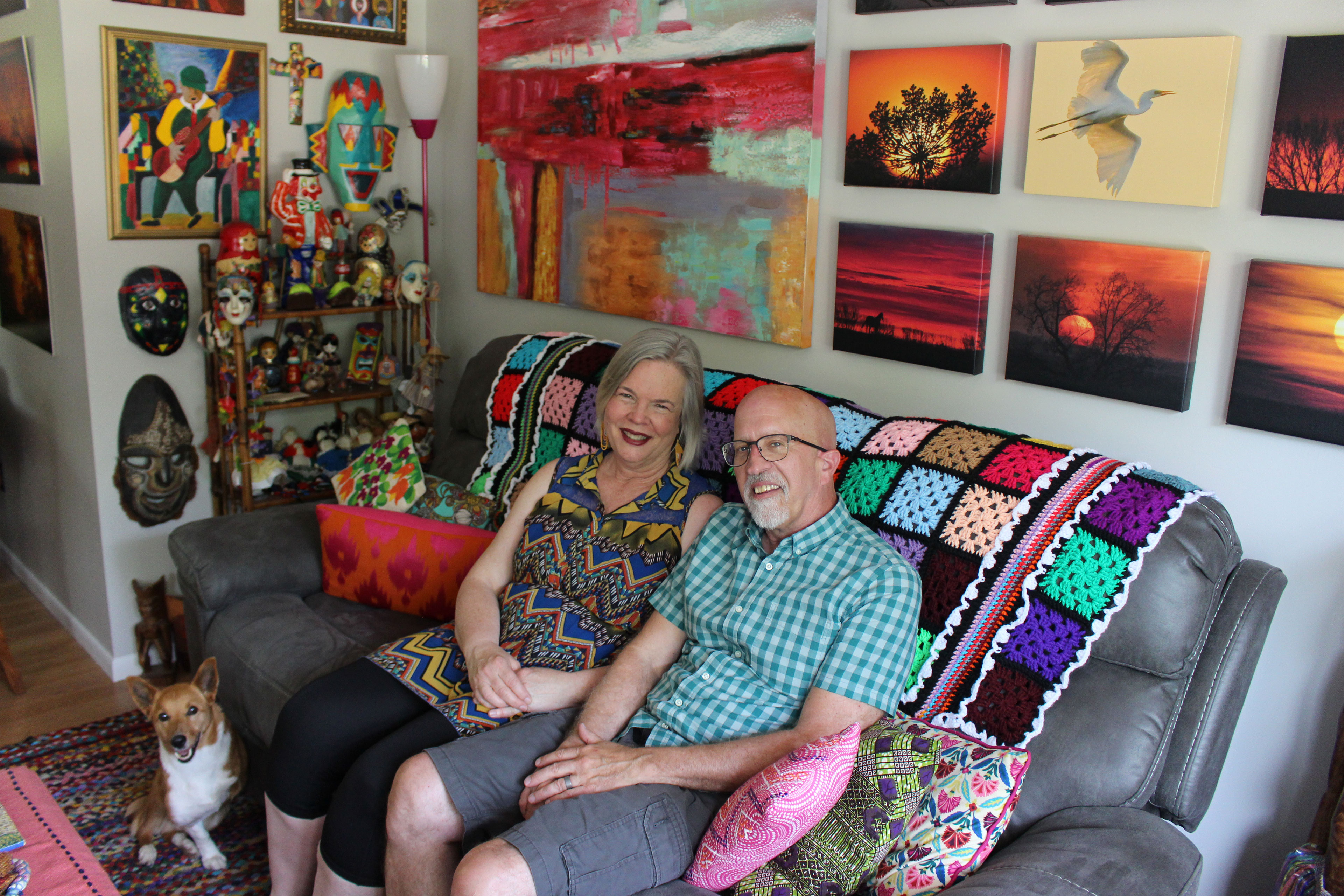
A medical cost-sharing plan left pastor with most of the cost
By Bram Sable-Smith, KHN
Jeff King, 63, Lawrence, Kansas
Approximate Medical Debt: $160,000
Medical Issue: Heart ablation
What Happened: Kareen King calls it “the ultimate paradox”: The hospital that saved her husband’s heart also broke it.
Jeff King needed his heart rhythm restored to normal with a procedure called an ablation — sooner rather than later, his doctor said. Jeff asked the hospital for a cost estimate but said he didn’t hear back before his scheduled surgery in January 2021 at Stormont Vail Health in Topeka, Kansas.
The real pain came when the $160,000 bill arrived in the mail a few weeks later. The Kings, who were uninsured at the time, were on the hook for nearly all of it.
For health coverage, they’d joined a medical cost-sharing plan with a company called Sedera, which describes its service as a “refreshing non-insurance approach to managing large and unexpected healthcare costs.” With this alternative to health insurance, members agree to share one another’s expenses. The plans are often faith-based and have surged in popularity because they can be cheaper than traditional insurance — the Kings said their plan cost $534 a month, plus an additional $118 a month to join a direct primary care medical practice.
But the sharing plans offer fewer protections than insurance and come with provisos. The Kings said their plan did not fully cover preexisting conditions like Jeff’s heart condition for the first two years of coverage — and he needed the surgery after 16 months.
In a statement, a Sedera spokesperson said it’s important that members understand the cost-sharing model and membership guidelines. “Sedera members read and agree to these prior to joining,” the statement read.
The Kings have dabbled in all sorts of health coverage in their 42 years of marriage. Jeff’s work as an evangelical pastor in his hometown of Osage City, Kansas, almost never provided insurance for the couple or their five children, all of whom are now grown. The exception came during Jeff’s most recent stint leading a congregation, starting in 2015. Kareen remembered feeling “unworthy” of the $1,800 a month the congregation paid for their insurance.
“We certainly had never come up with those kinds of premiums ourselves,” she recalled.
But Jeff decided he had to leave that job in 2018. He said he felt forced out over differences with some of his congregants on eternal damnation (“As a loving parent, I could never punish my child forever”) and gay marriage (“Maybe God is a whole lot more inclusive than we are”).
After Jeff resigned, the Kings briefly bought insurance through the Affordable Care Act marketplace but later dropped it because they weren’t eligible for subsidies and felt they couldn’t afford it.
That’s when they joined the Sedera plan. They knew the preexisting condition clause was a gamble, but medication had managed Jeff’s heart condition for years, and they didn’t expect he’d need medical procedures to address it.
What’s Broken: Without employer-sponsored insurance or federal subsidies to help fund their coverage, the Kings felt priced out of traditional insurance. But being uninsured left them exposed to hospital charges that ordinary patients typically never see.
Hospital charges are generally understood by health economists to bear little resemblance to the actual prices that are typically paid. Instead, they are more of an opening salvo in the high-stakes negotiations between hospitals trying to get as much money as they can for providing care and insurance companies trying to pay as little as possible.
But patients lack the bargaining power of large insurers, which may cover hundreds of thousands of patients in any given hospital’s catchment area. For patients like Jeff, the main recourse is to go through a hospital’s financial assistance program, although even with that help many patients can’t afford the bills hospitals send them.
Stormont Vail’s assistance program eventually knocked about $107,000 off Jeff’s original bill. Sedera provided a negotiator to help him haggle over costs.
Stormont Vail provided $19.5 million in financial assistance in tax year 2020 and wrote off about $13 million in bad debt, according to tax filings. Its net revenue from patient services was $838.7 million.
Bill Lane, a Stormont Vail administrator, said that in addition to providing financial assistance, the hospital works with patients facing high bills and offers payment plans with zero interest. Payments are often in the range of 10% of a person’s monthly income, Lane said. For some patients the hospital has a “catastrophic discount” program that caps their balance at 30% of their gross household income. The hospital also works with a local bank to provide loans to patients to pay their bills. And the hospital sometimes sends patients’ balances to debt collection agencies.
Lane said he generally recommends for patients to carry traditional insurance. He also said the hospital now offers a “patient estimates module” and suggests patients wait to schedule surgery, if possible, if they want an estimate “to make an informed decision.”
What’s Left: Despite Sedera’s two-year waiting period to cover preexisting conditions, the plan did give Jeff $15,000 to help with his bills. After Jeff paid that to the hospital and then negotiated for several months, his final balance was reduced to $37,859.34 in November 2021.
For his payment plan, Jeff said he was told the hospital would accept no less than $500 per month — the equivalent of an additional mortgage payment for the Kings. Jeff estimates it will take the family more than six years to pay it off.
“I never expected this to not cost me anything,” Jeff said, “but I wasn’t expecting what it turned out to be either.”
The Kings are piecing together the funds to pay what they owe the hospital. A few months after Jeff’s ablation, they sold their home in Osage City — where they raised five children and where Jeff grew up — and bought a smaller house in Lawrence. They had hoped to use that money to build their retirement account, since Jeff’s decades of pastoral work didn’t include a pension or 401(k).
Instead, the home sale is helping pay Jeff’s medical debt. Kareen has part-time jobs, and the couple leveraged their life insurance policy, as well.
Jeff began work as a hospice chaplain — for the extra income, but especially to qualify the couple for health insurance. That meant less time for his passion project, running a nonprofit called Transmuto through which he provides spiritual guidance.
In February, Kareen checked again on whether the couple could afford Affordable Care Act insurance so Jeff could get back to Transmuto full time. Her Google searches for the federal government’s health insurance marketplace (healthcare.gov) instead unwittingly landed her on websites that sell consumer information to insurance brokers. Speaking to one of those brokers on the phone, she bought what she said she was told was an Aetna plan. But it turned out to be a membership in a cost-sharing plan with a company called Jericho Share, which has received over 160 complaints on the Better Business Bureau website in the past year.
Jericho Share spokesperson Mark Hubbard said in a statement that the organization is “issuing full refunds when there is consumer confusion” and is continuing to “evaluate and update our marketing efforts to increase transparency and awareness.”
Hubbard also said Jericho Share is cooperating with regulators in California and New Hampshire that have questioned whether the organization meets state requirements of a health care sharing ministry. California is also questioning whether Jericho Share has indeed received 501(c)(3) nonprofit status from the IRS.
After canceling that plan and getting their money back, the Kings eventually did sign up for an Affordable Care Act marketplace plan. Jeff has reduced his hours as a chaplain, freeing up more time for Transmuto. All in all, the couple feels pretty fortunate.
“It’s just so tragic the way our system is,” Jeff said. “It puts so many people into impossible financial straits.”

Double shifts, credit card debt, and family loans when twins were born early
By Noam N. Levey, KHN
Allyson Ward, 43, Chicago
Approximate Medical Debt: $80,000
Medical Issue: Childbirth
What Happened: There were times after her sons were born 10 years ago when Allyson Ward wondered whether she and her family would lose their home.
On some days, she would tick through a list of friends and family, considering who could take them in. “We had a plan that we were not going to be homeless,” Ward recalled.
Ward is a nurse practitioner who works at a neonatal intensive care unit in Chicago. Her husband, Marcus, runs a small nonprofit.
But when the couple’s boys, Milo and Theo, were born 10 weeks prematurely, their lives were upended financially.
The twins were diagnosed with cerebral palsy. One required multiple surgeries to fix a breathing disorder. The babies spent more than three months in a NICU.
Ward and her husband scrambled to get the boys the care they needed, including years of physical and occupational therapy. The bills, which topped out at about $80,000, overwhelmed them.
Much of it at first was from hospital care. Then their health plan denied thousands of dollars in claims for the boys’ therapies, deeming some unnecessary.
Desperate, Ward and her husband loaded up credit cards, borrowed from relatives, and delayed repaying student loans. They moved back to the Midwest from Dallas to be closer to family who could help them.
In Chicago, Ward took on extra nursing shifts, working day and night several times a week. Her husband, who was finishing a master’s degree, watched the babies.
“I wanted to be a mom,” she said. “But we had to have the money.”
What’s Broken: Ward and her husband had health insurance through her employer in Texas.
But that’s often not enough to protect patients from a major medical event. Most Americans who have medical debt had coverage, according to a KFF survey.
Even with health insurance, childbirth can be very expensive. One in 8 Americans who have health care debt say it was at least partially caused by pregnancy and childbirth.
Ward and her husband are also among tens of millions of Americans who end up with medical debt because their health plan didn’t pay for something they believed would be covered. Such insurance issues are the most common form of billing problem cited by Americans with debt.
What’s Left: Since moving back to the Midwest, Ward and her husband have been slowly paying down the debt.
They bought a small house in Chicago in 2016. And Milo and Theo have been able to stay on grade level at school.
Although cerebral palsy can be severely disabling, the boys can run, ride bikes, and go rock climbing, which Ward credits to the many therapists who have worked with them.
Ten years later, though, the family is still paying off nearly $10,000 in medical debt on their credit cards.
Ward said sometimes at work she looks sadly at new parents in the NICU, thinking about their financial strains ahead. “They have no idea,” she said.
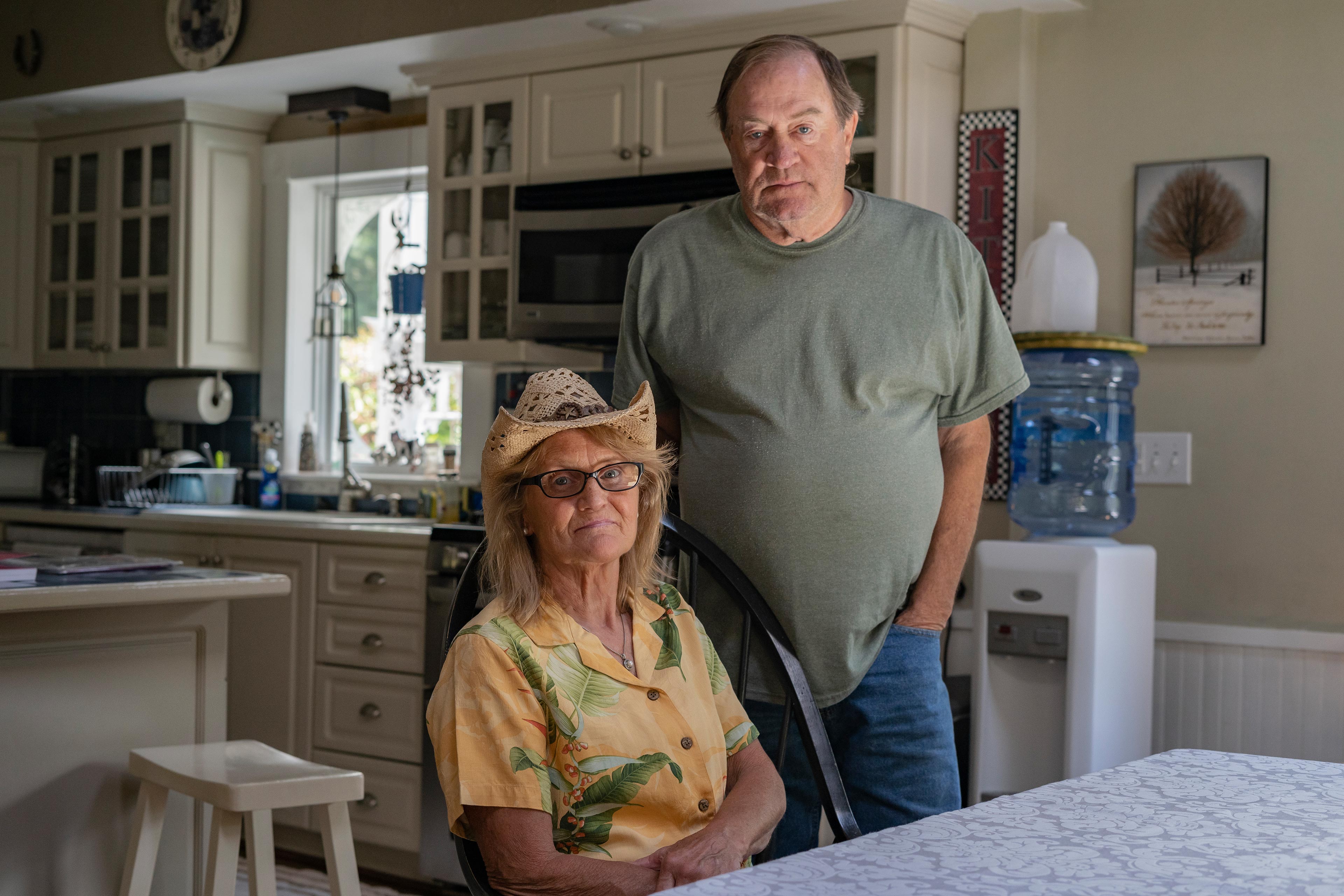
A surgery shatters retirement plans and leads to bankruptcy
By Noam N. Levey, KHN
Sherrie Foy, 63, Moneta, Virginia
Approximate Medical Debt: $850,000
Medical Issue: Colon surgery
What Happened: Sherrie and Michael Foy thought they’d made all the right preparations when they moved to rural southwestern Virginia after Michael retired from Consolidated Edison, New York’s largest utility.
Sherrie Foy loved horses and had started to rescue unwanted animals. The couple had diligently saved. And they had retiree health insurance through Con Edison.
“We were never rich,” Sherrie said. “But we had what we wanted.”
Then in 2016, Sherrie, who had lived for years with persistent bowel irritation, had her colon removed. After the surgery, she contracted a dangerous infection and barely survived.
The complications produced nearly $800,000 in bills from the University of Virginia Health System for services that weren’t covered by the Foys’ health insurance.
When the couple couldn’t pay, the state sued Sherrie. The only way past it, the Foys concluded, was to declare bankruptcy.
The nest egg they’d carefully built so her husband could retire early was wiped out. They cashed in a life insurance policy to pay a lawyer and liquidated savings accounts they’d set up for their grandchildren.
“They took everything we had,” Foy said. “Now we have nothing.”
What’s Broken: Foy fell victim to a gap in her husband’s retiree health insurance plan that capped lifetime coverage at $1 million.
Such caps were more common before the 2010 Affordable Care Act, though some plans with these caps were grandfathered in.
Relatively few patients with medical debt are sued, and some medical centers have been forced to scale back the practice in recent years after news reports about the lawsuits. (The University of Virginia Health System changed its policies following a 2019 KHN investigation.)
But hospitals and other medical providers still rely on the courts to collect from patients.
More broadly, bankruptcy caused directly or partially by medical debt remains a significant problem.
A nationwide KFF poll conducted for this project found about 1 in 8 adults with health care debt have been forced to declare bankruptcy.
What’s Left: Sherrie said her health has improved.
After the complications from her surgery in Virginia, she returned to New York to seek care at a hospital she said saved her life. That hospital never billed her, she said. She doesn’t know why, but she believes she may have qualified for charity care.
The bankruptcy has been devastating. The Foys get by on Michael’s pension and their Social Security checks.
The same year they declared bankruptcy, Michael also had a heart attack, and their daughter was diagnosed with breast cancer.
“It was a disaster of a year,” Sherrie said. “No one should have to go through this.”
Sherrie has no health insurance. She hopes there won’t be more major medical bills before she turns 65 and qualifies for Medicare.
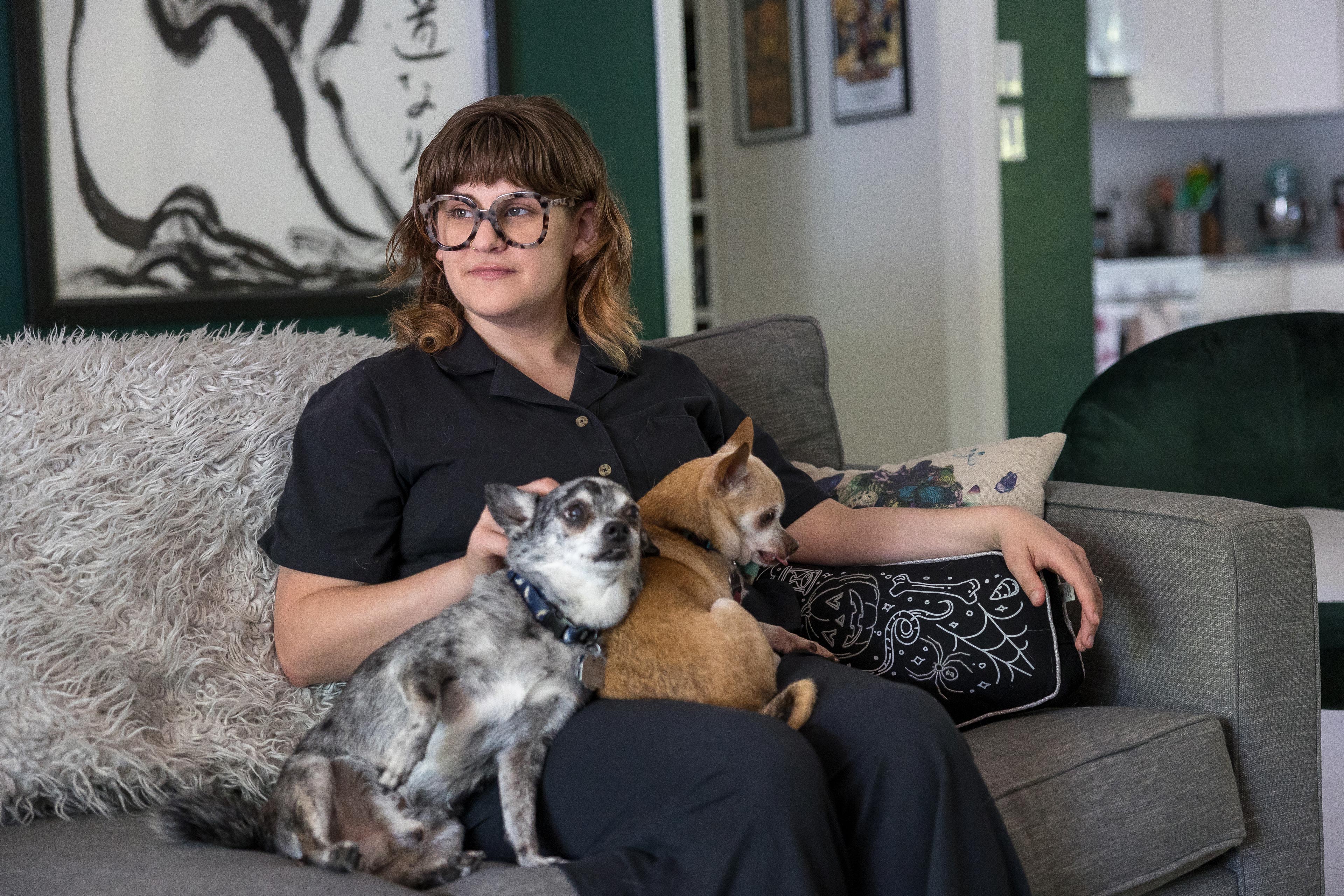
A sexual assault and years of calls from debt collectors
By Noam N. Levey, KHN
Edy Adams, 31, Austin, Texas
Approximate Medical Debt: $131
Medical Issue: Sexual assault
What Happened: Edy Adams had just graduated from college when she was sexually assaulted in 2013.
She was living in Chicago, and believes she was drugged while at a bar.
Adams doesn’t remember what happened. When she woke up the next morning bruised and confused, she contacted the police and was directed to get an exam at a local hospital emergency room, which confirmed the assault.
Police never found the perpetrator. Then two years later, Adams started getting calls from debt collectors saying she owed $130.68.
At first, Adams was confused. The hospital had told her that Illinois law prohibited medical providers from charging rape victims for a medical exam.
“I thought someone didn’t put in the proper billing code or something,” said Adams, who is now a medical student in Texas.
She explained the situation to the debt collector, who said the company would put a note in her file.
Nevertheless, about six months later, another call came from another debt collector seeking the same $130.68.
Adams again explained the situation. A few months later, there was yet another call.
It kept on for years, as her small debt was passed from one collector to another.
Adams tried to contact the hospital, but the bill was not theirs. It had originated with a physicians’ practice that had closed.
Sometimes when the debt collectors called, Adams would break down in tears on the phone. “I was frantic,” she recalled.
With each call, Adams said, she was forced to relive the worst day of her life and explain her trauma to a disembodied voice in a call center somewhere in America.
“I was being haunted by this zombie bill,” she said. “I couldn’t make it stop.”
What’s Broken: Federal regulators and consumer advocates for years have documented widespread problems across the debt collection industry, calling out collectors for not doing enough to verify and document bills before pursuing consumers.
The problems are particularly acute in medical debt collection. From 2018 to 2021, people contacted about a medical debt complained most frequently to the Consumer Financial Protection Bureau about being hounded for a debt they did not owe, the agency found.
And in a nationwide poll conducted by KFF, a third of Americans who had been contacted by a collection agency because of a medical or dental bill said the debt was not theirs.
What’s Left: Adams found relief only after the last debt collector reported the bill to a credit reporting agency, which lowered her credit score.
Adams petitioned the agency to have the debt removed, which it quickly did.
Adams said she didn’t begrudge most of the people who called her over the years. “It seemed like they were only cogs in this giant debt machine,” she said.
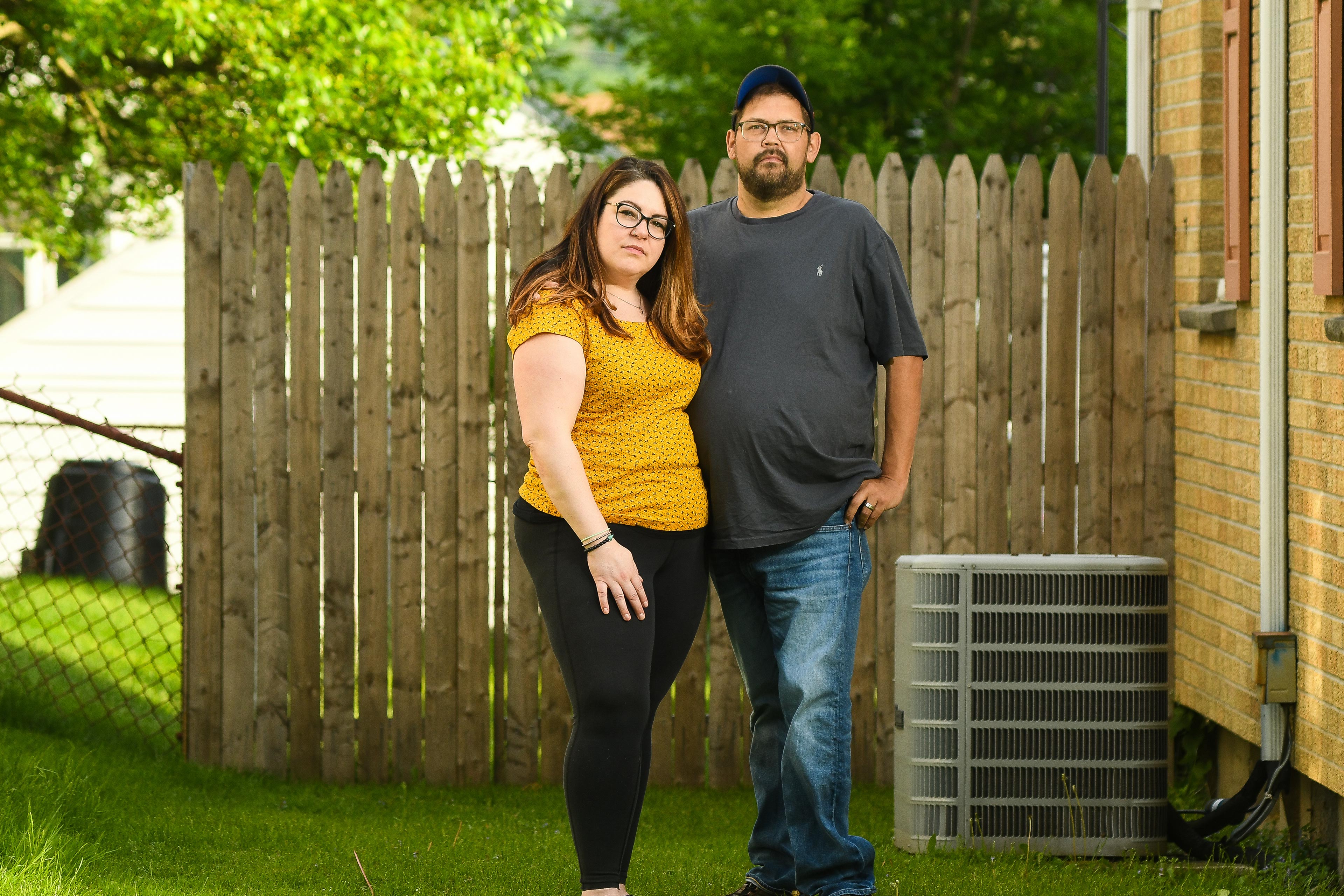
Hospital lawsuits and garnished wages on top of diabetes
By Noam N. Levey, KHN
Nick Woodruff, 37, Binghamton, New York
Approximate Medical Debt: $20,000
Medical Issue: Diabetes
What Happened: Nick Woodruff’s wages were garnished for the first time in 2016.
Woodruff, who was diagnosed with diabetes in his 20s, had a good job. He worked for a truck dealership in this small city 175 miles northwest of New York while his wife, Elizabeth, completed her degree in social work. His job had health benefits. The couple had recently bought a home.
But a small infection on Nick’s foot related to the diabetes set off a cascade of medical emergencies and financial struggles that the Woodruffs are still laboring to put behind them.
First Nick’s infection spread to the bone and threatened to overwhelm his immune system. He was hospitalized and suffered damage to his heart and kidneys.
More complications followed. Nick slipped going down the stairs, shattering his foot. Doctors later had to amputate it.
Then came thousands of dollars of medical bills, followed by debt collectors.
“We were drowning in medical debt, and he was not doing well,” Elizabeth recalled.
The bills were overwhelming and often incomprehensible. “There’s a lot that we owe that we don’t even know,” Elizabeth said.
The Woodruffs withdrew money from their retirement accounts. Their siblings kicked in to pay off some bills.
Elizabeth got a job as a social worker at the hospital, Our Lady of Lourdes Memorial Hospital, a Catholic institution that is now part of the Ascension chain. But that did little to forestall the debt collectors.
The hospital sued Nick, and he was ordered to pay an additional $9,391 before Elizabeth persuaded the hospital to lower the bill by several thousand dollars.
What’s Broken: The Woodruffs’ struggles with debt are a common experience for Americans who have chronic illnesses such as diabetes, heart disease, and cancer.
These people are more likely to end up with medical debt than those who are healthy, a nationwide poll conducted by KFF found.
In fact, illness is the strongest predictor of medical debt, according to an analysis by the Urban Institute, which looked at county-level debt and disease data across the country.
In the 100 U.S. counties with the highest levels of chronic disease, nearly a quarter of adults have medical debt on their credit records. By contrast, in the healthiest counties fewer than 1 in 10 have debt.
What’s Left: The Woodruffs have managed to pay down some of their debt, and Nick is on disability benefits because he’s no longer able to work.
Elizabeth has a new job, so she doesn’t have to work for the hospital that sued them.
They said they feel lucky to have been able to pay many of their bills. “I feel sorry for the people who don’t have the resources that we did,” Nick said.
But the couple remains shocked by the aggressive debt collections.
“This hospital boasts Catholic values and states they take pride in their charity work,” Elizabeth said, “but I am taken aback by how callous they have been.”

Denied care for a dangerous infection because of past-due bills
By Noam N. Levey, KHN
Ariane Buck, 30, Peoria, Arizona
Approximate Medical Debt: $50,000
Medical Issue: Infection
What Happened: Ariane Buck knew it was important to stay on top of his health care.
The young father, who lives with his wife and three children outside Phoenix, had survived cancer when he was a child.
But making ends meet hasn’t always been easy for Ariane, who sells health insurance, and his wife, Samantha, a therapist who cares for people with autism.
At times the family has fallen behind on medical bills. Still, they never expected to be denied care.
Just before Father’s Day in 2016, Ariane grew very sick. He couldn’t hold down food without vomiting. There was blood in his stool.
Samantha called the family’s primary care doctor seeking an appointment. But the office turned the Bucks away.
“They said they wouldn’t see him because of past due bills,” Samantha said, estimating they owed a few hundred dollars.
Ariane’s only choice was to go to a hospital emergency room. There he was diagnosed with a serious intestinal infection that required intravenous fluids and antibiotics.
The Bucks were also hit with thousands of dollars of additional bills they couldn’t pay.
What’s Broken: Hospitals for decades have been required by federal law to provide emergency medical care to any patients who need it, regardless of their ability to pay.
But many medical providers, including physicians, have policies that allow them to turn away patients with past-due bills for nonurgent care.
The practice is surprisingly common. Nationwide, 1 in 7 Americans with health care debt say they have been denied care because of money they owe, a poll conducted by KFF found.
On top of that, tens of millions of Americans ration their care. About two-thirds of U.S. adults with debt from medical or dental bills say they or a member of their household have put off getting care they needed because of costs.
What’s Left: Buck recovered from the infection and is now in good health. But the family’s medical debt has swelled to more than $50,000, from Ariane’s bills and Samantha’s.
Samantha went to the emergency room twice in the past several years with painful cases of endometriosis.
The Bucks have taken out loans, loaded up their credit cards, and sought help from charities.
“We’ve all had to cut back on everything,” Buck said. The kids wear hand-me-downs. They scrimp on school supplies and rely on family for Christmas gifts. A dinner out for chili is an extravagance.
“It pains me when my kids ask to go somewhere, and I can’t,” Buck said. “I feel as if I’ve failed as a parent.”
The couple is preparing to file for bankruptcy.
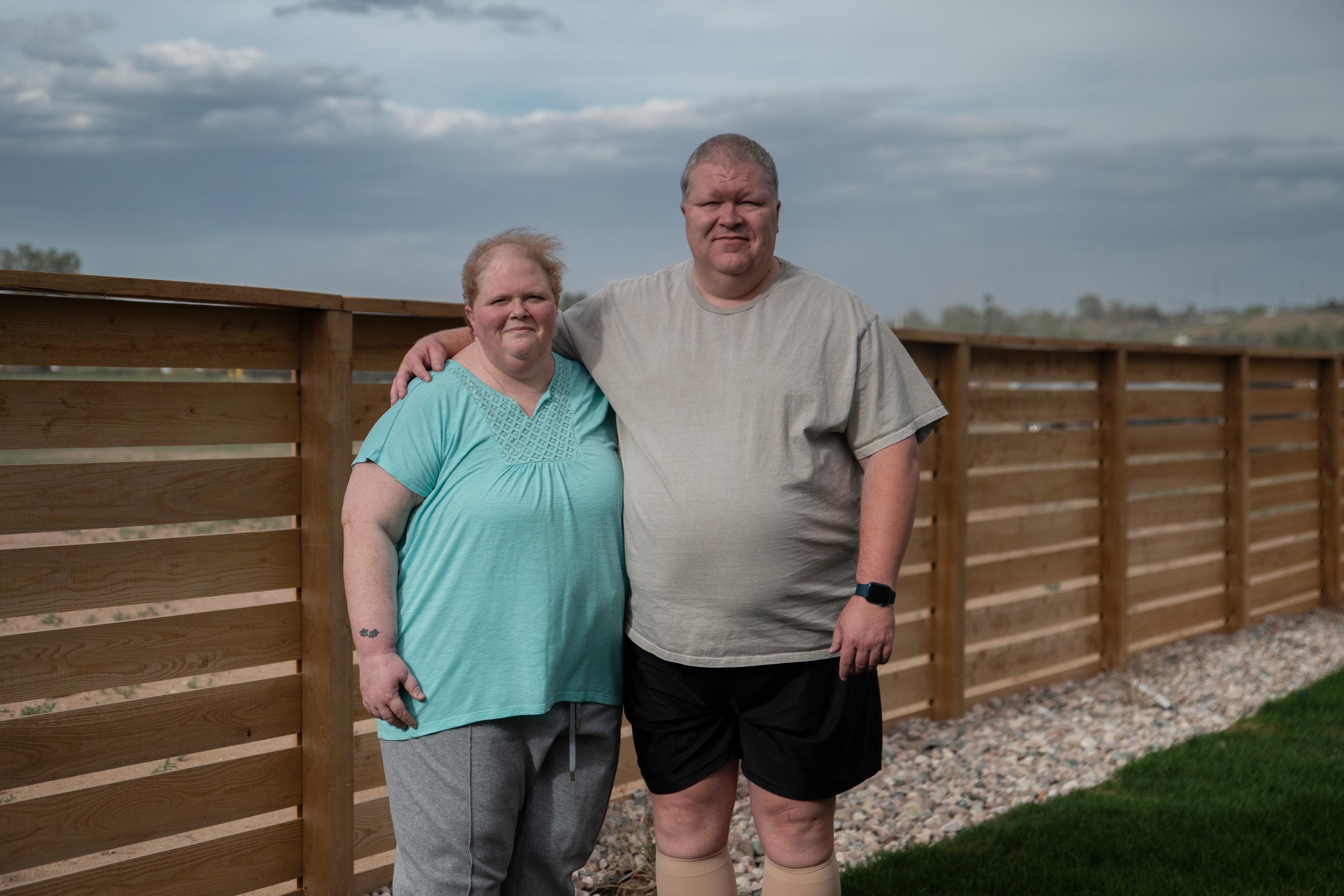
Nineteen surgeries over five years. Then they lost their house.
By Noam N. Levey, KHN
Cindy Powers, 52, Greeley, Colorado
Approximate Medical Debt: $250,000
Medical Issue: Twisted intestine
What Happened: Cindy Powers was 34 when doctors discovered she had a twisted intestine, a potentially life-threatening condition that doctors told her required immediate surgery.
She and her husband, Jim, were living outside Dallas at the time, where Jim had a job with a school district.
They had health insurance. But it couldn’t protect them from the flood of medical bills that swamped them after Cindy’s diagnosis.
Cindy’s first surgery, which lasted nine hours, would be followed by 18 more operations at hospitals across the Dallas-Fort Worth area. “Nobody was able to come up with a solution,” Jim said.
Cindy had recurring infections and hernias. Persistent pain left her addicted to the opioids she’d been prescribed.
“It was five years of hell,” Jim said of his wife’s medical ordeal.
By the time a surgeon finally repaired Cindy’s intestines in 2009, the couple had some $250,000 in medical debt. They declared bankruptcy.
The Powers also ended up losing their home when their mortgage was sold and the new lender rejected the payment plan set up through the bankruptcy.
A few years later, their adult daughter died. And in 2017, Cindy and Jim moved back to Colorado, where Cindy was from.
What’s Broken: How much medical debt contributes to housing insecurity is difficult to measure, as many people forced out of their homes face a mix of financial challenges.
But a recent nationwide poll by KFF suggests that the debt from health care is forcing millions of people from their homes.
About 1 in 12 Americans with health care debt say they have lost their home to eviction or foreclosure at least in part because of what they owed, the survey found.
And about 1 in 5 say they or someone in their household have moved in with family or friends or made some other change in their living arrangement because of health care debt.
What’s Left: After the bankruptcy and the move, the couple slowly got back on their feet financially.
Jim began work at an animal welfare group. Cindy, whose health has improved, got a job as well. The couple adopted their daughter’s girl, who’s now in sixth grade.
Then Jim needed prostate surgery. As he worked to scrape together the $1,100 he owed, he was sued by a debt collector.
“Things have got to change,” Jim said.

Damaged credit delays the dream of buying a home
By Aneri Pattani, KHN
Joe Pitzo, 42, Brookfield, Wisconsin
Approximate Medical Debt: $350,000
Medical Issue: Cancer
What Happened: Joe Pitzo and his wife, Amanda, had been married only five months when Joe was diagnosed with brain cancer in 2018. He would need brain surgery and extensive rehab.
They’d been planning to buy a house for their blended family of five children. Instead, they shifted their attention to doctor’s visits, insurance paperwork, and hospital bills. And their finances fell apart.
“This just took a major toll on my credit,” Joe said. “It went down to next to nothing.”
Joe had insurance through his employer. Prior to his brain surgery, the couple confirmed that the surgeon and hospital were in their insurer’s network. But around 4 p.m. the day before the procedure, their insurer said a device the surgeons planned to use was medically unnecessary. It was not covered.
Joe and Amanda proceeded with the surgery, figuring they could deal with the bills later.
The bills, it turned out, topped $350,000.
Joe said the debt dragged down his credit score by several hundred points.
Their best hope for a home loan became Amanda, who didn’t have much credit, she said. She’d never taken out a mortgage or a car loan.
What’s Broken: Difficulties with health insurance are a common feature of medical debt in the U.S.
Two-thirds of Americans with health care debt say they haven’t fully paid a bill because they were expecting their health plan to cover it, according to a nationwide survey conducted by KFF.
But health insurance rules and restrictions are often so complex that even diligent patients struggle to make sense of them.
It’s also not uncommon for medical debts to hurt patients’ credit scores. There’s growing pressure to change that.
This spring, the three leading credit agencies announced they would stop using small past-due medical bills in credit score calculations. And the federal Consumer Financial Protection Bureau plans to investigate whether any health care bills should be counted.
What’s Left: The Pitzos managed to get the hospital to reduce their charges to about $30,000.
They worked to build Amanda’s credit so she could apply for the loan and were finally able to buy a house in spring 2022.
They’re still making payments on about $19,000 in medical bills.
“It makes me sick about medical costs and how this whole thing is done,” Amanda said.

Haunted for 13 years by debt from childbirth, then rescued by a nonprofit
By Yuki Noguchi, NPR
Terri Logan, 42, Spartanburg, South Carolina
Approximate Medical Debt: $1,400, now $0
Medical Issue: Premature childbirth
What Happened: Two months ahead of her due date with her second daughter, Terri Logan felt weighed down by stress. She was a high school math teacher in Union City, Georgia, and was ending her relationship with the baby’s father.
One day the baby stopped moving. Logan went to the hospital, where her blood pressure spiked, her head throbbed, and she blacked out. Hours later, her daughter was born by cesarean section, weighing only 3 pounds. Logan had health insurance through work, but she was responsible for out-of-pocket charges. She and her baby were in a health crisis, so the issue of money didn’t come up: “That conversation just wasn’t had in that moment.”
About two weeks after her daughter was discharged, Logan was hit with a bill. She couldn’t bring herself to take a close look at the total. “It was one of those moments when you see … commas,” she said. She never opened the bills that arrived after that, knowing she couldn’t pay them or handle the stress. “I just avoided it like the plague.”
Other bills followed. Eventually, they were sent to collections.
The debt piled on to other stressors for the single mom. She developed debilitating anxiety, which brought on more headaches. She had to give up her full-time teaching job. “The weight of all of that medical debt — oh, man, it was tough,” she said. “Every day was tough. Every day, I’m thinking about what I owe, how am I going to get out of this.”
What’s Broken: Logan is among a growing number of working people who are considered under-insured; that is, they have an employer-sponsored plan but it pushes a lot of costs — in the form of copays, coinsurance, and deductibles — onto the patient.
This cost sharing, as it’s called, has increased steadily over the past two decades. Last year, the average annual deductible for a single worker with job-based coverage topped $1,669, which is 68% higher than a decade ago, according to an annual employer survey by KFF. Family deductibles can top $10,000.
At the same time, millions of Americans have next to no savings. A nationwide poll conducted by KFF for this project found that half of U.S. adults don’t have the cash to cover an unexpected $500 health care bill.
That makes debt almost inevitable for anyone with a large expense like the birth of a child, even if they have health insurance. Indeed, most Americans who have medical debt had coverage, according to the KFF poll.
With her older daughter, Logan said, she never saw a bill. It was an uncomplicated birth with no out-of-pocket charges. So she assumed her insurance would provide similar coverage for the second birth.
What’s Left: Nearly 13 years after her second daughter’s birth, Logan received yellow envelopes by mail and braced herself to open them. She was finally able to work again, whenever her health permitted. It was time to start tackling the problem that had dogged her.
As she put it: “It was like, ‘OK, even if you can’t pay it, you need to know who you owe. At some point, you gotta start, because you gotta take care of this to get into a better situation.’”
To her surprise, the envelopes did not contain bills, but rather a notice from RIP Medical Debt, a nonprofit, saying it had bought her unpaid medical debts and forgiven them on her behalf. She was shocked: “Wait: What? Who does that?”
Logan reread the letter and cried, absorbing the unexpected gift. “It definitely gives you a sense of, ‘You know what? There’s still good in this world,’” she said.
RIP Medical Debt uses donated funds to buy unpaid medical debt, directly from hospitals or on the secondary market, for about 1% of the original value. It selects unpaid bills held by lower-income patients — those making up to four times the federal poverty level — and instead of trying to collect on those loans, simply forgives them.
Through the pandemic, donations have skyrocketed, enabling the group to accelerate its purchase of hospital debts. To date, it has forgiven $6.7 billion in medical debt, helping 3.6 million people.
The lifting of her own debt burden, Logan said, has freed her to pursue long-dormant interests. A lover of the stage, she planned her first singing performance this month.

Sleepless nights over her children’s future as debts pile up
By Noam N. Levey, KHN
Jeni Rae Peters, 44, Rapid City, South Dakota
Approximate Medical Debt: More than $30,000
Medical Issue: Breast cancer
What Happened: Jeni Rae Peters’ budget has always been tight. But Peters, a single mom and mental health counselor, has worked to provide opportunities for her children, including two girls she adopted and a succession of foster children. One of her daughters had been homeless.
Then two years ago, Peters was diagnosed with stage 2 breast cancer.
Multiple surgeries, radiation, and chemotherapy controlled the disease. But, despite having insurance, Peters was left with more than $30,000 of debt and mounting threats from bill collectors.
One collection call came as Peters was lying in the recovery room after her double mastectomy. “I was kind of delirious, and I thought it was my kids,” she said. “It was someone asking me to pay a medical bill.”
Through the surgeries and treatments, Peters kept working so she would not lose her insurance. She took on extra work to pay some of the bills. Five days a week, she works back-to-back shifts at both a mental health crisis center and a clinic where she counsels teenagers, some of whom are suicidal. Last year, three friends on the East Coast paid off some of the debt.
But Peters’ credit score has tumbled below 600. And she worries constantly about how she will provide for her children.
Peters said she could drop car insurance for her teenage daughter, who just got her license. Canceling ice skating for another daughter would yield an extra $60 a month. But Peters is reluctant. “Do you know what it feels like to be a foster kid and get a gold medal in ice skating? Do you know what kind of citizen they could become if they know they’re special?” she said.
Peters added: “My doctor saved my life, but my medical bills are stealing from my children’s lives.”
What’s Broken: Despite many advances in cancer treatments, millions of Americans end up in debt after being diagnosed with the disease.
That’s in part because medications and treatments are now so expensive. It’s also because health plans typically require patients to pay thousands of dollars out-of-pocket in deductibles and other cost sharing.
One study found that cancer patients were 71% more likely than Americans without the disease to have bills in collections or to have a credit account closed for nonpayment.
The debt forces many to make difficult sacrifices. Two-thirds of U.S. adults who’ve incurred health care debt who’ve had cancer themselves or in their family have cut spending on food, clothing, or other household basics, according to a poll conducted by KFF for this project. One in 4 have declared bankruptcy or lost their home.
The financial stress from debt can hinder cancer patients’ recovery and even hasten death, researchers have found.
What’s Left: Peters’ cancer is in remission, and her health has improved. She said she’s excited about adopting two more of her foster children.
But the threats from debt collectors keep coming. She recently received a new collection notice for $13,000, warning her that she would soon face legal action.
Peters said she has no way of paying off all her debts. She recently told one bill collector that she was prepared to go to court and ask the judge to decide which of her children should miss out on after-school activities to pay off debt.
She asked another debt collector whether he had kids. “He told me that it had been my choice to get the surgery,” Peters recalled. “And I said, ‘Yeah, I guess I chose not to be dead.’”
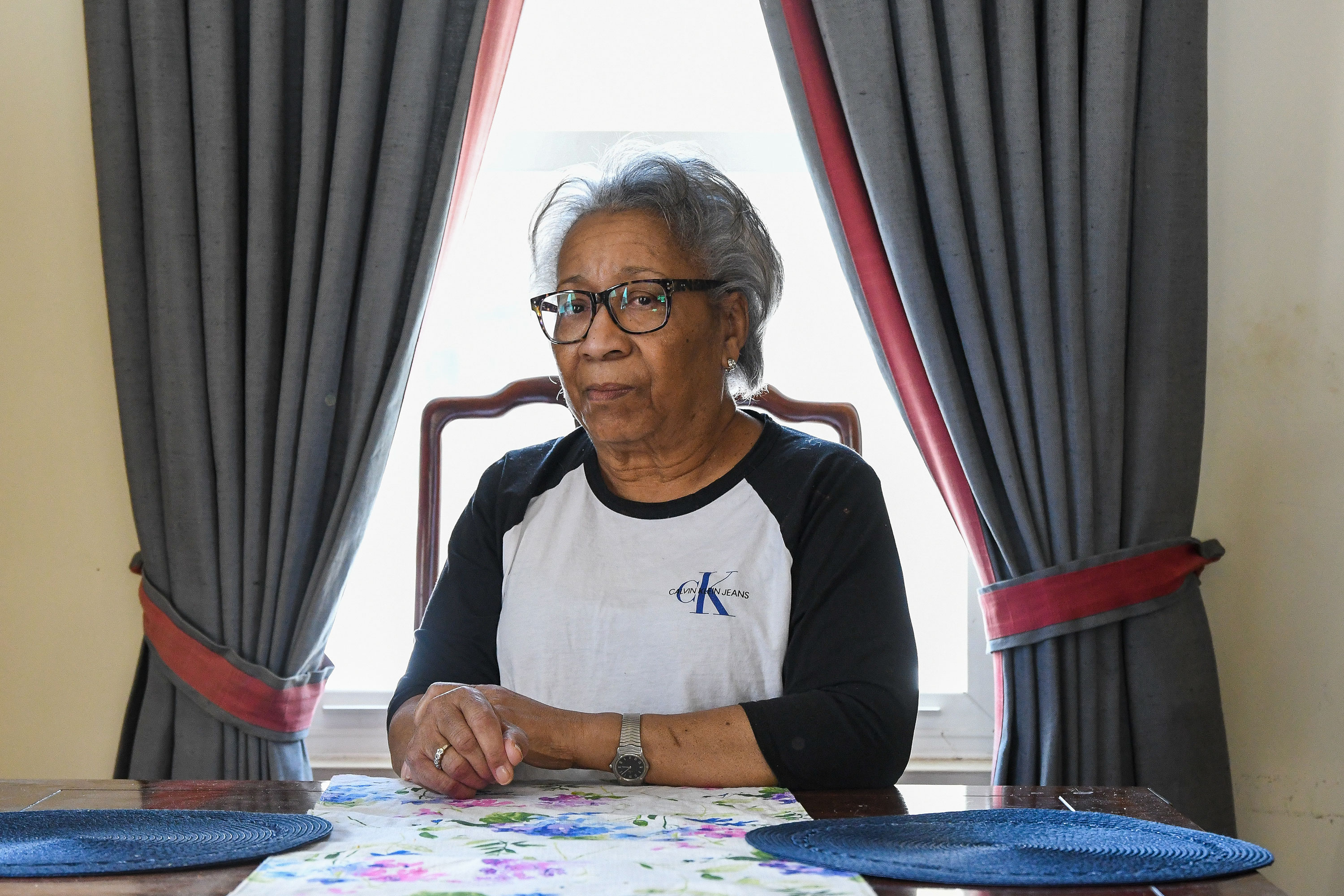
Her brother landed in a nursing home. She was sued over his bill.
By Noam N. Levey, KHN
Lucille Brooks, 74, Pittsford, New York
Approximate Medical Debt: $8,000
Medical Issue: None. She was billed for her brother’s care.
What Happened: Lucille Brooks was stunned to discover a nursing home in Monroe County, New York, was suing her. She had never been a patient there. Nor had her husband. “I thought this was crazy,” she said, figuring it had to be a mistake.
The bill was for care her brother, James Lawson, received in summer 2019. He’d been hospitalized for complications from a diabetes medication. The hospital released him to the county-run nursing home, where Brooks had visited him a few times. No one ever talked to her about billing, she said. And she was never asked to sign anything.
Brooks and Lawson were part of a big family that moved north from Mississippi to escape segregation in the 1960s. Lawson had a career at the Rochester Parks and Recreation Department. Brooks worked in insurance. They lived on opposite sides of the city. “My brother always took care of his own business,” she said.
Lawson spent two months in the nursing home. A year later, Brooks was sued.
The county alleged that Brooks should have used her brother’s assets to pay his bills and that she was therefore personally responsible for his debt. Attached to the suit was an admissions agreement with what looked like Brooks’ signature.
What’s Broken: Admissions agreements often designate whoever signs as a “responsible party” who will help the nursing home collect payments or enroll the resident in Medicaid, the government safety-net program.
Consumer advocates say nursing homes slip the agreements into papers that family members sign when an older parent or sick friend is admitted. Sometimes people are told they must sign, a violation of federal law. “They are given a stack of forms and told, ‘Sign here, sign there. Click here, click there,” said Miriam Sheline, managing attorney at Pro Seniors, a nonprofit law firm in Cincinnati.
Litigation is a frequent byproduct of America’s medical debt crisis, which a KHN-NPR investigation found has touched more than half of all U.S. adults in the past five years.
About 1 in 7 adults who have had health care debt say they’ve been threatened with a lawsuit or arrest, according to a nationwide KFF poll. Five percent say they’ve been sued.
The nursing home industry has quietly developed what consumer attorneys and patient advocates say is a pernicious strategy of pursuing family and friends of patients despite federal law that was enacted to protect them from debt collection.
In Monroe County, 24 federally licensed nursing homes filed 238 debt collections cases from 2018 to 2021 seeking almost $7.6 million, KHN found. Nearly two-thirds of the cases targeted a friend or relative.
Many were accused — often without documentation — of hiding residents’ assets. The practice can intimidate people with means into paying debts they do not owe, said Anna Anderson, an attorney at the nonprofit Legal Assistance of Western New York. “People see that on a lawsuit and they think they’re being accused of stealing,” she said. “It’s chilling.”
What’s Left: When the bill came, Brooks was so worried that she didn’t tell her husband. “People like us live on a fixed income,” she said. “We don’t have money to throw around, especially when you don’t see it coming.”
Brooks turned to Legal Assistance of Western New York, a nonprofit, which has represented defendants in such cases. In time, Monroe County dropped its case against her. Brooks said she thinks the signature on the admissions agreement was forged from the nursing home’s visitor log, the only thing she signed.
Now she tells anyone with a friend or relative in a nursing home not to sign anything. “It’s ridiculous,” she said. “But why would you ever think they would be coming after you?”
About This Project
“Diagnosis: Debt” is a reporting partnership between KHN and NPR exploring the scale, impact, and causes of medical debt in America.
The series draws on original polling by KFF, court records, federal data on hospital finances, contracts obtained through public records requests, data on international health systems, and a yearlong investigation into the financial assistance and collection policies of more than 500 hospitals across the country.
Additional research was conducted by the Urban Institute, which analyzed credit bureau and other demographic data on poverty, race, and health status for KHN to explore where medical debt is concentrated in the U.S. and what factors are associated with high debt levels.
The JPMorgan Chase Institute analyzed records from a sampling of Chase credit card holders to look at how customers’ balances may be affected by major medical expenses. And the CED Project, a Denver nonprofit, worked with KHN on a survey of its clients to explore links between medical debt and housing instability.
KHN journalists worked with KFF public opinion researchers to design and analyze the “KFF Health Care Debt Survey.” The survey was conducted Feb. 25 through March 20, 2022, online and via telephone, in English and Spanish, among a nationally representative sample of 2,375 U.S. adults, including 1,292 adults with current health care debt and 382 adults who had health care debt in the past five years. The margin of sampling error is plus or minus 3 percentage points for the full sample and 3 percentage points for those with current debt. For results based on subgroups, the margin of sampling error may be higher.
Reporters from KHN and NPR also conducted hundreds of interviews with patients across the country; spoke with physicians, health industry leaders, consumer advocates, debt lawyers, and researchers; and reviewed scores of studies and surveys about medical debt.






